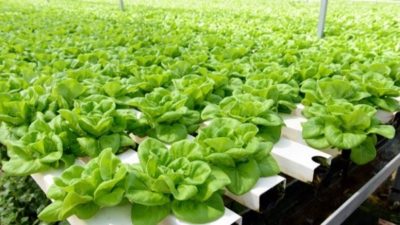2305354 HYDROPONICS

| Course Number | 2305354 | |
|---|---|---|
| Course Credits | 2 (2-0-4) | |
| Course Abbrviation | HYDROPONICS | |
| Course Title (TH) | การผลิตพืชแบบไฮโดรโปนิกส์ | |
| Course Title (EN) | HYDROPONICS | |
| Responsible Unit | Faculty of Science, Department of Botany | |
| Type of Course | International Course | |
| Semester | Intl 2nd semester | |
| Academic Year | 2024 | |
| Course Coordinator | ||
| Measurement Method | ||
| Type of Course | Semester Course | |
| Course Condition | Concurrent 2305355 | |
| Course Status | Elective | |
| Instructors / staffs | ||
| Enrollment conditions | None | |
| Degree level | Bachelor | |
| Related curricular | Bachelor of Science in Biotechnology (2562) | |
| Bachelor of Science in Biotechnology (2567) | ||
| Course description (TH) | ประวัติความเป็นมาของไฮโดรโปนิกส์ ข้อดีและข้อเสีย ระบบการปลูก สารละลายธาตุอาหาร สูตรธาตุอาหาร พืชที่เหมาะสมคุณค่าทางโภชนาการ การควบคุมโรคและแมลง การปลูกพืชโดยไม่ใช้ดินวิธีอื่น การประยุกต์ใช้วิธีการปลูกพืชแบบไฮโดรโปนิกส์ | |
| Course description (EN) | Historical background of hydroponics, advantages and disadvantages; growing systems; the nutrient solution; the formulation of nutrients; suitable crops; nutritional value; pest and disease control; other methods for soilless culture; application of hydroponics. | |
| Curriculum mapping | / | CU-1.1: Behavioral Objectives Possessing well-rounded knowledge |
| / | CU-1.2: Possessing in-depth knowledge | |
| / | CU-2.1: Being moral and ethical | |
| / | CU-2.2: Having an awareness of etiquette | |
| / | CU-3.1: Being able to think critically | |
| / | CU-3.2: Being able to think creatively | |
| / | CU-3.3: Having skills in problem solving | |
| / | CU-4.1: Having professional skills | |
| / | CU-4.2: Having communication skills | |
| / | CU-4.3: Having skills in information technology | |
| / | CU-4.4: Having mathematical and statistical skills | |
| / | CU-4.5: Having management skills | |
| / | CU-5.1: Having an inquiring mind | |
| / | CU-5.2: Knowing how to learn | |
| / | CU-5.3: Having leadership qualities | |
| / | CU-5.4: Maintaining well-being | |
| / | CU-5.5: Being community-minded and possessing social responsibility | |
| / | CU-5.6: Sustaining Thainess in a globalized world | |
| subPLO1.1 Explain biotechnology knowledge in practice. | ||
| / | subPLO1.2 Analyze biotechnology knowledge in practice. | |
| subPLO1.3 Apply biotechnology knowledge in practice. | ||
| PLO2 Employ biotechnology-related technology and scientific tools. | ||
| / | PLO3 Communicate effectively in English within the Biotechnology field. | |
| PLO4 Demonstrate behavior that aligns with ethical principles, moral values, and professional ethics. | ||
| PLO5 Demonstrate social responsibility, courage, and creativity. | ||
| Course learning outcome (CLO) | 1. Discuss the historical background, advantages, and disadvantages of hydroponics. | |
| 2. Analyze the differences between the growing systems and the component of nutrient formulas. | ||
| 3. Discuss the application of hydroponics in various aspects. |
| # | Date | Time | Learning content | Instructor | CLO | Remark |
|---|---|---|---|---|---|---|
| 1 | Course Introduction | • | ||||
| 2 | Introductory to Hydroponics: Definition, Historical Background, Advantages and Disadvantages | • | ||||
| 3 | Growing Systems: With Media, Inorganic Media, Organic Media; Without Media, A Recirculation System, Non-recirculating Systems | |||||
| 4 | Growing Systems: With Media, Inorganic Media, Organic Media; Without Media, A Recirculation System, Non-recirculating Systems | |||||
| 5 | The Essential and Beneficial Elements | |||||
| 6 | The Essential and Beneficial Elements | |||||
| 7 | The Nutrient Solution | |||||
| 8 | The Nutrient Solution | |||||
| 9 | ||||||
| 10 | What Crops to Grow | |||||
| 11 | Pest and Disease Control | |||||
| 12 | Pest and Disease Control | |||||
| 13 | Other Soilless Cultures | |||||
| 14 | Other Soilless Cultures | |||||
| 15 | Nutritional Value Aspects & Application of Hydroponics | |||||
| 16 | Current Topic on Hydroponics/ Student Presentation |
| Teaching/learning media | PowerPoint Media and Handouts | ||
| Communication channels / LMS | |||
| Type | Channel identifier / URL | Remarks | |
| Learning Management System (LMS) | |||
| Assessment method | Level of assessment | Related CLO | Percentage |
| Research Article Presentation | 20 % | ||
| Mid-term examination | 30 % | ||
| Final examination | 50 % | ||
| Grading | Grading System | Letter Grad (A-F) | |
| Grading method | |||
| Minimum Passing Level (MPL) | |||
| Reading list | |||
| Type | Title | Remarks | |
| Textbook | Jones, J. B. Jr. 2005. Hydroponics: A Practical Guide for the Soilless Grower.2nd ed. CRC Press, USA. | None | |
| Textbook | Kozai, T., Niu, G. and Takagaki, M. 2016. Plant Factory. An Indoor Vertical Farming System for Efficient Quality Food Production. Academic Press, USA. | None | |
| Textbook | Marschner, P. 2012. Marschner's Mineral Nutrition of Higher Plants. 3rd ed. Academic Press, USA | None | |
| Textbook | Raviv, M. and Lieth, J. H. 2008. Soilless Culture: Theory and Practice. 1sted. ElsevierScience, USA. | None | |
| Textbook | Resh, H. M. 2013. Hydroponic Food Production: a definitiveguidebook for the advanced home gardener and the commercial hydroponic grower.7th ed. CRC Press/Taylor & Francis Group, Boca Raton, FL. | None | |
| Course evaluation | Course evaluation system | myCourseVille | |
| Details of improvement from previous evaluation | – | ||
| Course quality control | Responses to complaints / petitions from students | Directly to the instructor |
